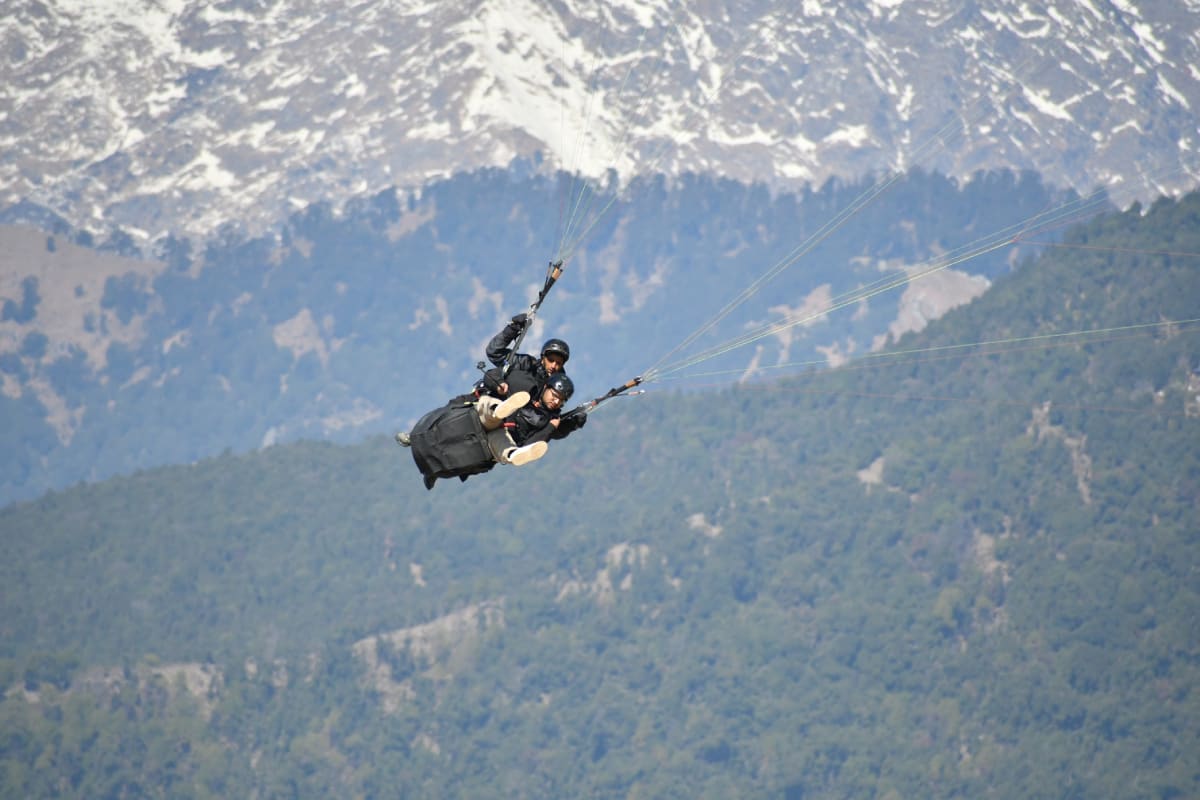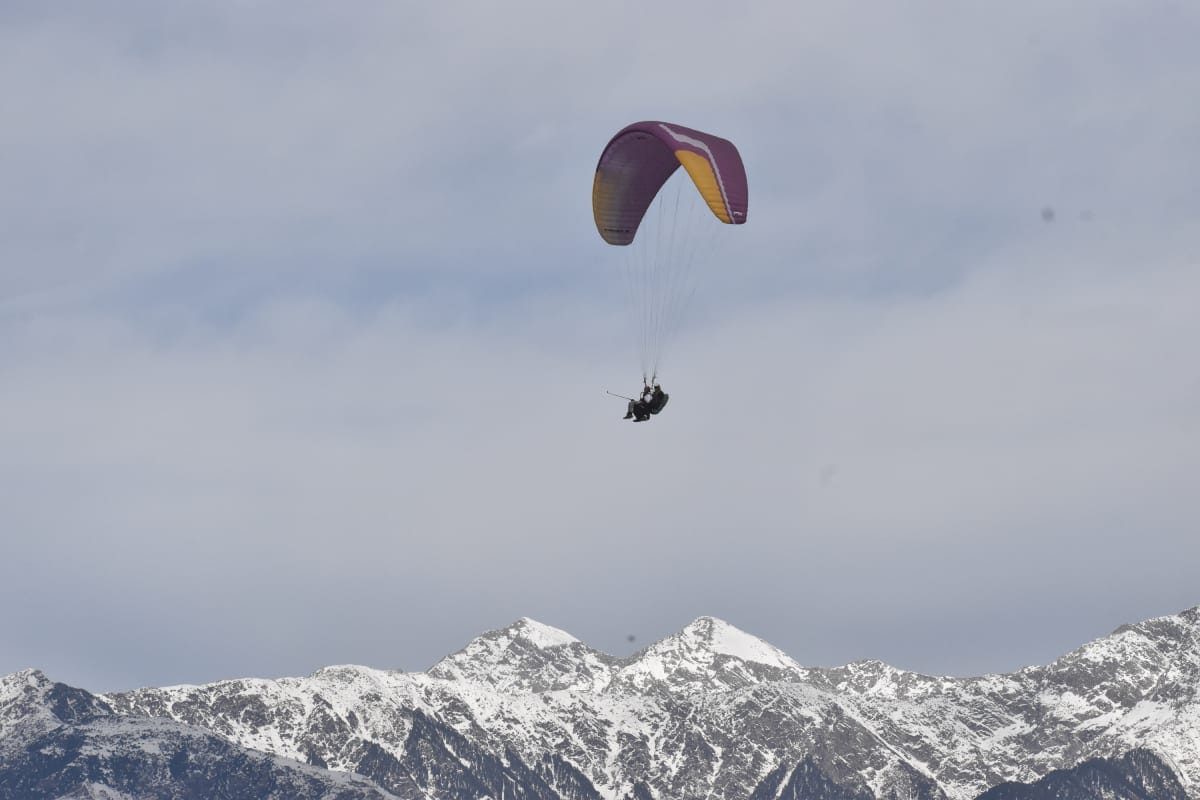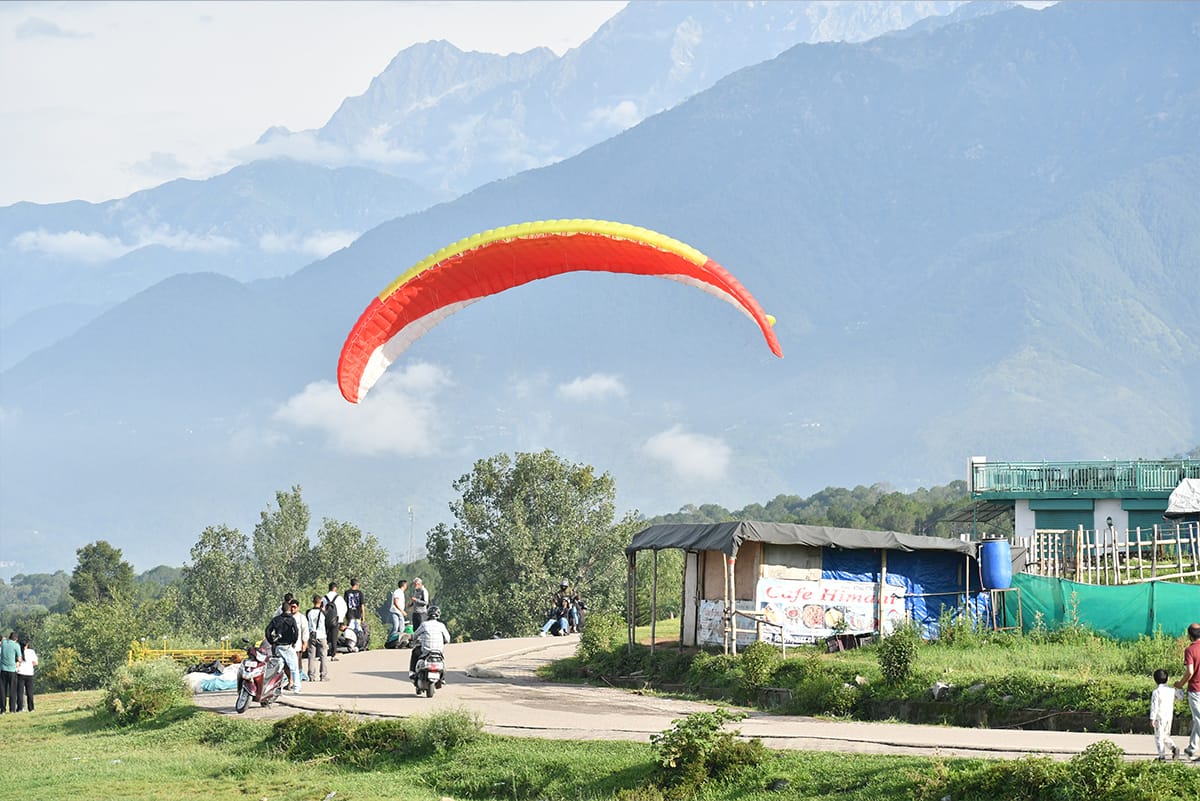🪂 What is Paragliding Sport? A Complete Guide
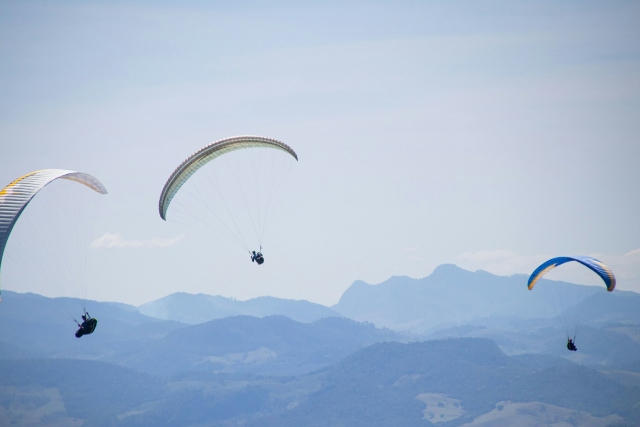
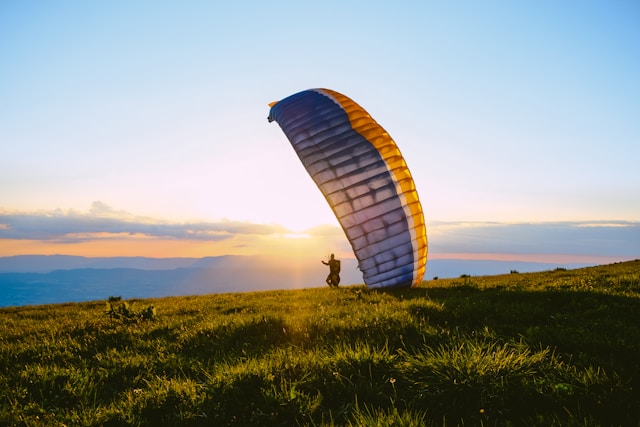
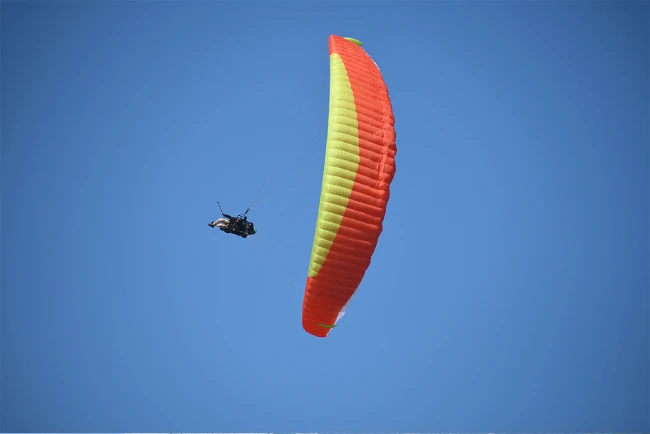
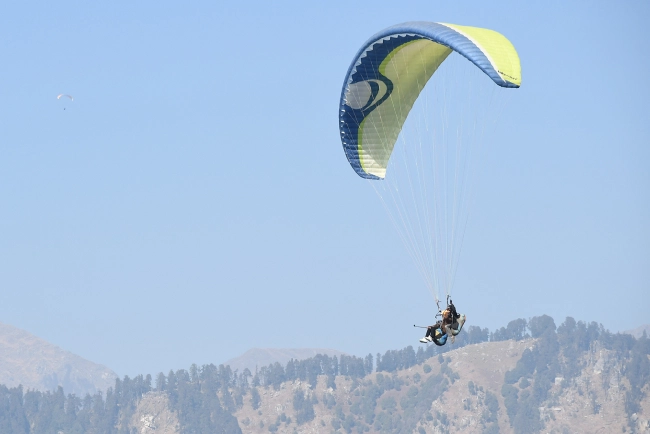
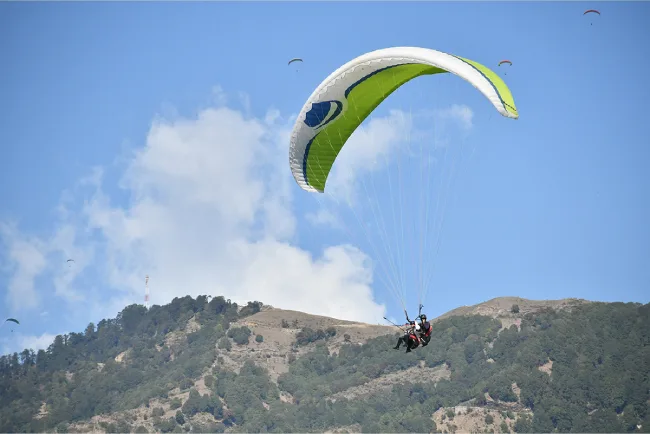
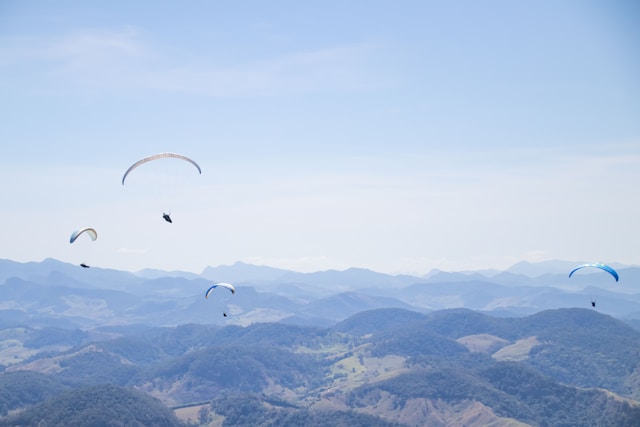
Introduction
Paragliding is one of the most exhilarating adventure sports in the world. Imagine running off a hill or cliff and soaring above valleys, rivers, and mountains with only a lightweight wing above you and the wind supporting your flight. It’s a combination of freedom, thrill, and breathtaking views that attracts thousands of adventure seekers every year.
Whether you are looking to experience a tandem flight for fun or pursue solo paragliding seriously, this guide will take you through everything you need to know about the sport – from its definition and history to equipment, types, and the learning process.
What is Paragliding Sport?
Paragliding is both a recreational and competitive air sport where the pilot flies using a lightweight, foot-launched glider known as a paraglider. Unlike hang gliders, a paraglider doesn’t have a rigid frame; instead, its fabric wing keeps its shape with the help of air pressure as it moves through the sky.
The sport allows a person to take off from hills or mountains and glide through the air using thermal currents, ridge lifts, and wind. It’s considered one of the safest and most accessible forms of free flight, especially for beginners flying under supervision.
History of Paragliding?
The dream of flying has always inspired humans, but paragliding as a proper sport emerged only in the late 20th century. In the 1960s and 70s, adventurous pilots began experimenting with parachutes and slope launches. French pioneers like Jean-Claude Bétemps, André Bohn, and Pierre Lemoigne played a key role in shaping parachutes into wings that could glide smoothly. By the early 1980s, designs became lighter, safer, and easier to control, opening the skies to longer recreational flights. Starting in France and Switzerland, the activity quickly spread worldwide, gaining recognition as both a competitive and recreational sport with training schools and certifications.
Learning to Fly: How Many Days Does It Take?
Paragliding isn’t something you master overnight, but it doesn’t take years either. Most beginners can complete a basic training course in 7 to 10 days.
- Day 1–2: Ground handling – learning to control the wing on the ground.
- Day 3–4: Short practice flights from small hills.
- Day 5–7: Longer training flights under supervision.
- Day 8–10: Solo flights with radio guidance from instructors.
Factors such as weather, physical fitness, and the quality of the training school play a significant role. A dedicated beginner, given favorable weather and proper guidance, can often gain enough confidence to fly solo in roughly a week.

Types of Paragliding and Paragliders
Paragliding:
- Tandem Paragliding: Fly with an experienced pilot. Perfect for first-timers.
- Solo Paragliding: Independent flight after proper training.
- Cross Country (XC) Paragliding: Long-distance flights between mountains using thermals.
- Acro Paragliding: Performing aerial stunts like spirals, wingovers, and SAT (for experts).
- Hike & Fly: Hiking up mountains with lightweight gear and flying back down.
- Paramotoring (Powered Paragliding): Flight assisted with a motor on the back for extended airtime.
Paragliders:
- Beginner (EN A Class): Stable, forgiving, designed for safety and easy control.
- Intermediate (EN B Class): A balance of performance and safety, suited for pilots with some experience.
- Advanced/Performance (EN C/D Class): High-performance wings with greater speed and glide but requiring more skill.
- Competition & Acro Wings: Specialized designs for extreme maneuvers or racing.
Essential Equipment for Paragliding
- Paraglider Wing: The canopy that creates lift and allows flight.
- Harness: A comfortable seat-like system connecting the pilot to the wing.
- Helmet: Protects against head injuries during takeoff or landing.
- Reserve Parachute: An emergency backup in case of wing collapse.
- Variometer (Vario): An instrument that shows climb and sink rate.
- Radio: For communication with instructors or fellow pilots.
- Flying Suit, Gloves, and Boots: For protection and comfort in changing weather.
Which Paraglider Is Best for Beginners?
For new pilots, the EN A certified glider is highly recommended. These gliders are:
- Easy to launch and land
- Very stable in the air
- Forgiveness of pilot errors
- Ideal for learning thermals and ridge soaring
Brands like Ozone, Advance, and Nova offer beginner-friendly wings widely used in training schools worldwide.
Safety & Learning Considerations
Safety is the top priority in paragliding:
- Always fly with certified instructors if you are a beginner.
- Check weather conditions before flying.
- Use proper equipment and pre-flight checks.
- Never exceed the weight limits or skill level of your glider.
- Take formal lessons rather than self-learning.
Why You’ll Love Paragliding (Summary)
Paragliding isn’t just a sport—it’s an experience of freedom, connection, and thrill. From the first step off the hill to hours spent gliding over valleys, it offers a rare sense of peace mixed with adrenaline.
In short:
- It’s a simple yet powerful way to fly.
- Easy to learn within a few days of training.
- Rich history rooted in innovation and passion.
- Multiple styles for every kind of adventure seeker.
- Safety-focused equipment ensures confidence.
- Beginner-friendly paragliders make it accessible to everyone.
Whether you dream of floating above green valleys, chasing thermals across mountains, or simply feeling the wind on your face, paragliding is your gateway to the skies.
- 🪂 What is Paragliding Sport? A Complete Guide
- Introduction
- What is Paragliding Sport?
- History of Paragliding?
- Learning to Fly: How Many Days Does It Take?
- Types of Paragliding and Paragliders
- Essential Equipment for Paragliding
- Which Paraglider Is Best for Beginners?
- Safety & Learning Considerations
- Why You’ll Love Paragliding (Summary)
- FAQ
FAQ
Paragliding sport is a unique adventure activity that lets you fly freely using a lightweight glider wing. Unlike motorised flying, paragliding depends on wind and thermals to keep you in the air. It is one of the easiest aerial sports to try because even beginners can experience it through tandem flights, while solo paragliding requires proper training. Many travellers describe paragliding sport as both thrilling and peaceful, since you feel the rush of flying yet enjoy the calm of the skies. With certified schools and professional pilots, anyone can safely explore this exciting sport.
Solo paragliding means flying the glider on your own, without a pilot. To do this, you must join a certified paragliding school, where you learn about weather, safety, and glider control. Training usually takes around a week, after which you can fly under supervision. Solo paragliding is different from tandem flights because here you take all decisions yourself—from launching to landing. For many, it is the real essence of the paragliding sport, as you gain freedom, independence, and a closer connection with the wind. Beginners often try tandem first, then move on to solo paragliding.
Paragliding is an adventure activity where a person uses a lightweight fabric wing to take off from a hillside and fly with the help of air currents. Instead of jumping from an aircraft, you simply run forward on a slope and the canopy lifts you into the sky. It feels like gliding freely, just the way birds ride the wind.
The best paragliding site depends on weather, landscapes, and safety. Globally, Interlaken in Switzerland and Chamonix in France are famous, while in India, Bir Billing is often called the best paragliding site. Bir Billing hosted the Paragliding World Cup and offers consistent winds, scenic Himalayan views, and safe take-off zones, making it a favourite for both solo paragliding and tandem flights. Choosing the best paragliding site usually comes down to whether you want smooth scenic rides, cross-country flying, or longer airtime. Each destination gives a different flavour to the paragliding sport.
Paragliding can be safe for beginners as long as it’s done under the right conditions. Training with a certified school, flying with modern safety gear, and carefully following your instructor’s guidance make a huge difference. Special beginner-friendly wings, known as EN A class gliders, are built to be more stable and forgiving, which helps new pilots gain confidence in the air.
To fly a paraglider safely, a pilot needs a few key items. The most important is the paraglider wing, which creates lift, along with a harness that holds the pilot securely in place. A helmet is essential for head protection, and a reserve parachute is carried as a backup in case of emergencies. Sturdy boots and gloves make takeoffs and landings safer and more comfortable. Many pilots also carry instruments such as a variometer, which helps track altitude and thermal lift. For longer flights, wearing a windproof flying suit or warm clothing keeps the pilot comfortable in changing weather conditions.
Almost anyone with normal fitness can paraglide. However, people with serious heart problems, high blood pressure, or physical restrictions should consult a doctor before trying.
Many beginners wonder what to wear for paragliding sport. The simple rule is to stay comfortable and protected. Strong shoes or trekking boots are needed for safe take-off and landing. A light jacket or windproof layer is useful, especially at higher altitudes where temperatures drop quickly. Gloves and sunglasses add extra comfort. At the best paragliding sites, the weather can change suddenly, so layered clothing is smart. Avoid heavy jeans or loose sandals. Whether you are trying tandem paragliding or solo paragliding, dressing right ensures safety and allows you to focus fully on enjoying the flight.
The size of paraglider you need depends on your total flying weight, which includes your body weight plus the harness and equipment. Beginners in solo paragliding usually start with EN A certified wings, which are stable and easy to control. A larger glider provides more stability, while a smaller one reacts faster but requires more skill. Professional instructors at the best paragliding sites always guide students on what size paraglider they need. Choosing the right size is crucial because it affects safety, performance, and how enjoyable the paragliding sport feels when you’re in the air.
The roots of modern paragliding trace back to Mieussy, a small town in the French Alps, where in 1978 a few adventurous pioneers tried flying downhill using modified parachutes. Their successful flights marked the beginning of paragliding as a sport and laid the foundation for the activity we enjoy today.
Paragliding: In paragliding, you launch by running down a hillside with a lightweight glider wing. Once in the air, you can stay up anywhere from a few minutes to several hours, depending on wind and thermal conditions.
Parasailing: Here, you’re attached to a parachute that is towed behind a moving boat. It’s usually a short recreational ride and doesn’t involve controlling the wing yourself.
Skydiving: In this sport, you jump out of an aircraft at high altitude, free-fall for a while, and then open a parachute to land safely.
When people ask “what is the paragliding,” the answer is simple: it’s an adventure sport where you use a fabric wing to glide through the sky. Hang gliding, however, uses a rigid triangular frame and the pilot lies suspended under it. Both give amazing flying experiences, but paragliding sport is easier to learn and more portable since the wing fits into a backpack. Hang gliding can be faster, but paragliding allows softer take-offs and landings, making it friendlier for beginners. If you’re deciding between the two, paragliding sport is usually the better choice for a first-time flyer.
To fly solo legally and safely, you need a licence or certification from a recognised paragliding association or school. Different countries have their own regulations, but most follow international standards like those from the FAI (World Air Sports Federation). In India, completing a certified solo paragliding course allows you to fly at approved sites. A licence proves that you have learned about weather, equipment, flight techniques, and emergency procedures. Without it, solo paragliding can be risky and restricted. So, enrolling in a reputed school and obtaining proper certification is the key step before flying on your own.
No, solo paragliding without training is not possible or safe. Flying a paraglider requires knowledge of aerodynamics, weather conditions, take-off techniques, and emergency handling. Without proper training, the risks are extremely high, and most best paragliding sites won’t even allow you to launch without certification. A structured training program, usually lasting a week or more, ensures you know how to control the wing and land safely. For beginners who just want the experience, tandem flights with professional pilots are a better option. Training is not just a formality; it is what makes solo paragliding safe and enjoyable.
The cost of paragliding depends on whether you choose tandem flights or solo paragliding training. At famous destinations like Bir Billing, a tandem flight is reasonably priced and includes pilot, gear, and transport. Solo training courses, however, take about a week and cost more because they cover lessons, equipment, and certification. Later, if you buy your own gear, the cost of paragliding increases but it becomes a long-term investment in the sport. Although the cost of paragliding varies across locations, the priceless reward is the chance to experience true freedom while flying in the open sky.
The minimum age for solo paragliding usually depends on the country and the training school. In many places, you need to be at least 16–18 years old to enrol in a full solo course. Younger flyers may be allowed only under parental consent or limited training programs. This age requirement is set because solo paragliding demands physical fitness, decision-making, and maturity to handle sudden weather changes. Children can still enjoy tandem paragliding from a younger age, but solo paragliding is designed for adults who can take full responsibility. Always check local rules at the best paragliding sites before booking.
For beginners, the best paraglider is always a stable and forgiving wing. Most schools recommend EN A class wings for solo paragliding because they are designed with extra safety and predictable handling. These gliders are more tolerant of pilot mistakes and provide smooth, controlled flights. While advanced pilots may choose faster wings, beginners should never compromise on safety. At the best paragliding sites, instructors help you select the right wing size based on your weight and goals. The best paraglider for a beginner is one that allows you to build confidence, learn steadily, and enjoy the sport without stress.
